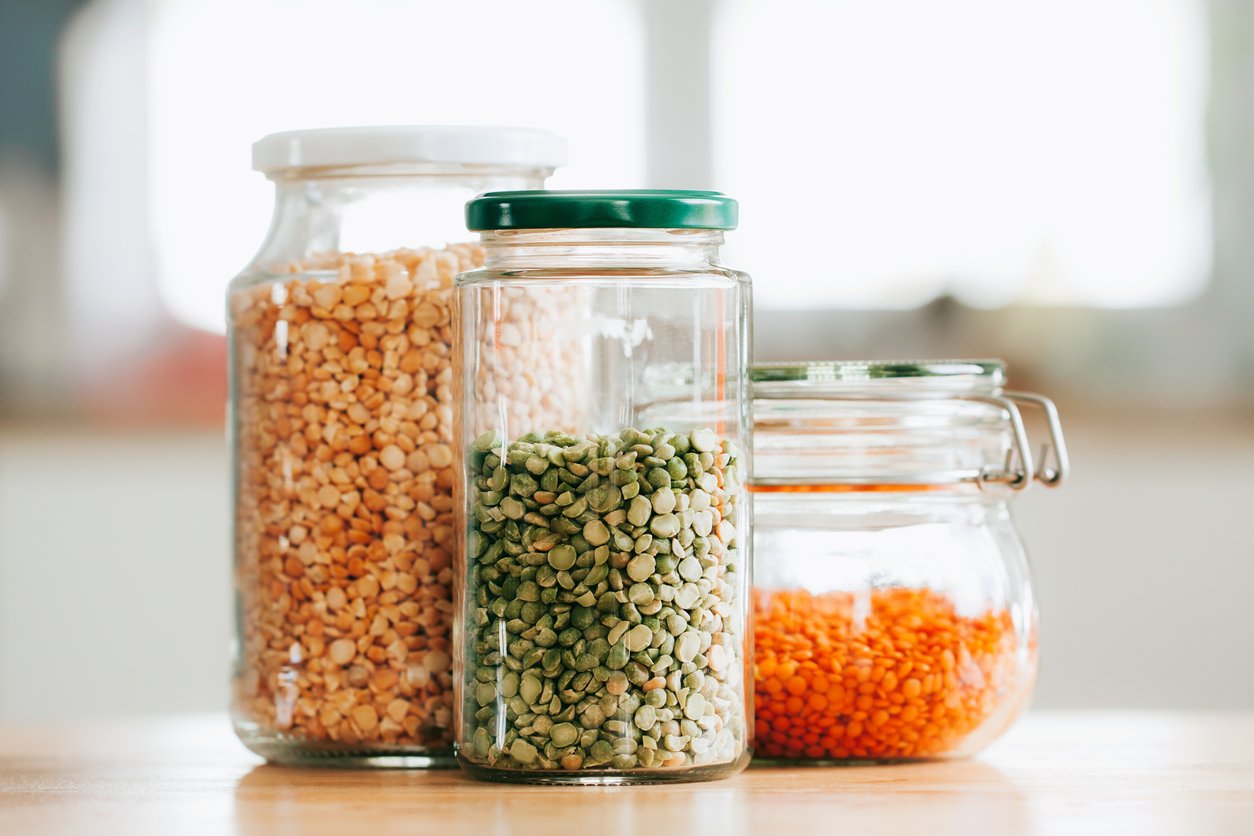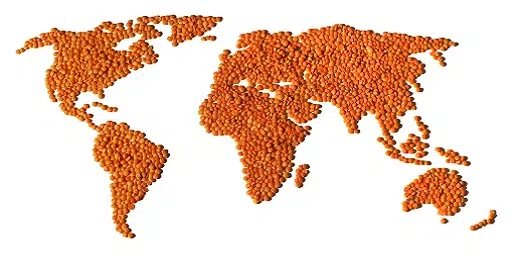by Ocean Robbins: People around the world have valued lentils as a food staple for millennia…
We are proud to announce a new partnership with John and Ocean Robbins and the Food Revolution to bring our readers Summits, Seminars and Masterclasses on health, nutrition and Earth-Conscious living.
Sign Up Today For the Healthy Brain Masterclass
They’re used in many popular and traditional dishes, such as lentil soup or Indian dal. Plant-based cooks value lentils for their versatility as a meat substitute. And they’ve got a lot of protein, which is nicely complemented by an abundance of fiber.
Thanks to a neat trick that lentils (like all legumes) perform with the help of bacteria that live on their root nodules, they can also restore the fertility of overused soil and help to mitigate the effects of climate change.
In this article, I aim to elevate the humble lentil to superfood status (go big or go home, am I right?). You’ll see that lentils are remarkably valuable, both for the health of those who consume them and for the health of the land upon which they’re grown.
In fact, lentils are one of the most sustainable, nutritious, and, when you know what to do with them, delicious foods on the planet.
What Are Lentils?

The word “lentil” comes from the Latin name of the plant, Lens culinaris, which means “kitchen lens.” I found this surprising because lentils existed before optical lenses. I imagine an early optometrist, trying to name the glass disk in their new invention while waiting for lunch, realizing, “It’s shaped like a lentil! I’ll call it a lens!”
Lentils are pulses, which are the edible dried seeds of legumes. Other pulses include beans, peas, and chickpeas. Wild lentils are indigenous to much of the world, including western Asia and North America. They were first cultivated in the Near East’s Fertile Crescent and quickly spread to Europe, the Middle East, India, Afghanistan, and Ethiopia.
Canada (the province of Saskatchewan, specifically) produces almost half the world’s lentils these days, while India is the world’s largest consumer.
Lentils are related to beans, and are quite similar in terms of their health benefits and uses, but differ in some important ways. They’re differently sized and shaped, which affects how they’re cooked (which we’ll get to in a bit), and contain a different nutritional profile. This includes being lower in indigestible sugars, which means they aren’t nearly as implicated in episodes of flatulence as beans are.
Lentils come in many different varieties and colors, including green, yellow, red, brown, and black. They can also vary in size, flavor, and texture. If you want to see someone in a shiny clean kitchen getting very enthusiastic about different lentils and their culinary uses, the Saskatchewan Pulse Growers have a video for you:
You can buy whole or split lentils, a distinction that can determine their culinary applications. Whole lentils have a meaty, chunkier texture while split lentils tend to dissolve and are used to create thick curries, sauces, and soups.
Lentil Nutrition
Lentils are nutritional superstars. They contain enough calories to qualify as a staple food for some populations, including medieval Europe and the present-day Indian subcontinent. At the same time, they’re rich in many micronutrients, including phytonutrients and minerals. Lentils are also high in protein and complex carbohydrates, and are good sources of B vitamins and minerals like iron, magnesium, phosphorus, potassium, zinc, copper, and manganese.
Lentils are unusually high in polyphenols, which are powerful phytonutrients that perform a host of positive functions in the body. They’re also a rich source of fiber, a nutrient sorely lacking in the modern industrialized diet. One cup of cooked lentils provides one-third of your daily allowance of fiber. And the fiber in lentils includes valuable resistant starch, a prebiotic that feeds the beneficial bacteria in your gut that play a large role in your overall health and wellbeing.
Lentil Benefits

I’m not the only one singing the praises of lentils. The United Nations declared 2016 the “International Year of Pulses” to bring awareness to the health and environmental benefits of lentils. And not content with a one-off acknowledgment, three years later, the UN General Assembly institutionalized adoration of lentils by proclaiming February 10 as World Pulses Day. (February 10 is also National Umbrella Day and National Cream Cheese Brownie Day, so pace your celebrations.)
What’s so great about lentils that the UN keeps promoting them? Let’s start with why they’re so good for you.
Health Benefits of Lentils
Lentils, along with their leguminous cousins beans and peas, are pretty much a superfood, albeit a humble one. One review study from 2017 summarizes the health effects of lentils as “antioxidant, antibacterial, anti-fungal, antiviral, cardioprotective, anti-inflammatory, nephroprotective, antidiabetic, anticancer, anti-obesity, hypolipidemic and chemopreventive.” (Which I’d like to sing to the tune of “I Am the Very Model of a Modern Major General” from The Pirates of Penzance — but probably only in the shower.)
I was familiar with most of those words, but looked up nephroprotective (“protecting the kidneys”), hypolipemic (“lowering blood fats”), and chemopreventive (“blocks the development of cancer,” which seems redundant after already saying “anticancer” and so was probably just included to make the words match the melody better).
Lentils and Type 2 Diabetes
Lentils are low on the glycemic index, which means they don’t spike blood glucose levels after eating. This makes them an excellent source of calories and carbohydrates for people with type 2 diabetes. Even when blended after cooking, which you might think would make their carbs more readily available in the bloodstream, lentils don’t move higher on the glycemic index.
Lentils appear to benefit diabetics specifically by reducing their risk of cardiovascular disease (the leading cause of death in people with diabetes). A 2015 study found that polyphenol-rich lentil sprouts improved the blood lipid profiles of overweight and obese people with type 2 diabetes, raising their “good” HDL cholesterol and lowering “bad” LDL cholesterol. Lentils also can lower blood pressure, which also protects against cardiovascular disease. And indeed, evidence suggests that the more lentils people eat, the lower their mortality from heart attacks and strokes.
Are Lentils Good for Your Gut?
The prebiotic fiber in lentils can make your beneficial gut bacteria very happy. And when they’re happy (or at least well fed — we don’t yet have psychological assessments for bifidobacterium), they produce short-chain fatty acids (SCFAs) such as butyrate, acetate, and propionate.
These SCFAs and other byproducts of prebiotic digestion are associated with a reduced risk of diabetes, cancer, obesity, and cardiovascular diseases. A 2021 study of mice (our view on the use of animals in medical research is here) with genetically-induced obesity found that adding lentils to their diet led to less weight gain and greater biodiversity in their microbiomes. Observational studies suggest that humans can enjoy the same benefits, and that lentils are indeed good for your gut.
Lentils and Cancer
With all those polyphenols, you might predict that lentils are a great anticancer food, and you’d be right. Even the lectins in lentils, compounds that some people deride as “antinutrients,” appear to exert a cancer-preventing effect on the body.
Lentils fight cancer via a whole bunch of complementary mechanisms, including reducing inflammation, DNA damage, cancer cell proliferation, and metastasis. They also encourage apoptosis, or the programmed self-destruction by damaged cells that typically gets turned off in cancerous cells.
Eating lentils has been shown to reduce risk for colon, thyroid, liver, breast, and prostate cancers. One 2017 meta-analysis quantified lentils’ effect on prostate cancer — a man’s risk decreased by about 4% for every 20 grams of lentils they consumed daily. For reference, that’s the same weight as four grapes (or three pens, or four nickels, or 20 buttons, or four credit cards — gee, the Internet is fun).
Are Lentils Good for Your Immune System?
More and more people are paying attention to optimizing their immune systems, in the hopes of warding off (or experiencing mild cases of) infectious diseases. Test tube and rodent studies have shown that the lectin proteins found in lentils can block spike proteins from viruses such as SARS-CoV-2 and MERS-CoV (Middle East respiratory syndrome coronavirus, a disease that humans caught from dromedary camels and which the World Health Organization has tagged as a potential cause of a future pandemic).
Lentils are also antimicrobial, inhibiting the growth of bacterial and fungal infections. They contain defensin peptides (amino acid chains) that protect the plant from infections and lend that protection to us when we eat them.
Lentils and Weight Loss
Can lentils help you lose weight? Possibly! A 2012 study found that adding lentils to pasta sauce reduced appetite and food intake, leading to weight loss and a slimmer waist.
In a clever 2019 study, participants were fed chili whose base was either rice, green lentils, or red lentils. Those who ate green lentils reported feeling full sooner and wanting to eat less over the next three hours compared to those who ate chili with rice or with red lentils.
Are Lentils Sustainable?

Growing lentils for food (and having them replace animal-based foods) provides benefits to the whole world. Since lentils are rich in protein, they represent an abundant plant-based alternative to meat — and one with a much smaller carbon footprint.
And when it comes to the efficiency of protein production, there’s no contest. A field of lentils yields far more protein than equal square footage used for cattle or chicken farming.
Lentils produce greenhouse gas emissions that are 10–20 times lower than animal products. By partnering with rhizobia bacteria that attach to lentil root nodules, the plants can do a trick that’s crucial for all vegetative and animal life on earth — turning atmospheric nitrogen into bioavailable nitrogen. This process, called nitrogen fixation, makes possible the synthesis of proteins, which are the building blocks of life.
Farmers and gardeners appreciate lentils’ ability (all legumes, actually) to make nitrogen fertilizer because it means they don’t have to spend money purchasing and applying commercially produced nitrogen fertilizer.
Lentils not only contribute to a reduction in greenhouse gas emissions, but they also store more carbon in the soil than most other plants — up to 30% more. This means that growing more lentils could return atmospheric carbon — the stuff that’s fueling climate chaos — to the soil and vegetation, where it belongs.
And on a planet where dry areas are getting drier due to climate change, it helps that lentils are moderately drought resistant and can even increase the water-holding capacity of soil. Where irrigation is impossible or impractical, lentils make sense as a rainfed crop even when rains are less frequent. This is important since water scarcity is now a leading cause of food shortages worldwide.
Planting lentils can also reduce disease and weed pressure on farm and garden plots when intercropped with non-pulse crops. They regenerate soil, adding nitrogen, organic material, and water retention capacity — all of which make the other crops more resistant to disease and predation by pests. And a season of lentils can interfere with the life cycle of pests and diseases that otherwise would have a field day (literally) with the plant species they consume.
Lentils can also thrive in what is called “no-till” agriculture, which is what it sounds like — the topsoil is mostly left undisturbed, rather than being tilled to create bare soil for planting. No-till offers several advantages over traditional deep tilling. First, farmers save fuel and money by eliminating this step. Second, it decreases water loss from the soil. And third, it reduces topsoil erosion, keeping nutrients and microorganisms in the soil where the plants can access them as needed.
Canadian lentil farmers have embraced no-till methods. According to the industry group Pulse Canada, over 80% of them do not till their lentil fields.
How to Store Lentils

Lentils are easy to store. You can keep dry lentils for up to a year in your pantry or another cool and dry place. For best results, keep them in a dark place (like a closed cupboard), in an airtight container like a glass storage container or mason jar.
Once cooked, your lentils will stay good for up to a week in your refrigerator. You can also freeze cooked lentils and use them within six months. Helpful tip — please label them so you don’t mistake them for cake or blueberries in low light.
For quick meals, canned lentils or ready-to-eat steamed lentils are also an option. You can safely hang on to them for a year or two, depending on the best-by date. Canned lentils may be salty, so you may want to drain and rinse them to reduce their sodium content. And look for BPA-free cans, or glass containers, to avoid possible toxin exposure from BPA.
How to Use Lentils

Lentils are very versatile, and thanks to their worldwide popularity, feature in many different cuisines. As great meat substitutes, they can go with pretty much any savory dish. (And if you want to conduct a blind randomized control trial, you can even bake them into muffins.)
Lentils can be used cold or hot. Here are just a few suggestions on how to use lentils:
- In soups, stews, and chili
- In hot casseroles like Shepherd’s pie
- Mixed into sauces like pasta sauce
- As a filling for tacos, burritos, and lettuce cups
- In power bowls
- Mixed into veggie burger patties
- Cold on salads
- In dips
- In Indian dishes like dals
For instruction on how to cook lentils, and their best uses in action, check out the infographic below.

Lentils Are Good for You & the Environment!
Lentils are highly nutritious legumes with multiple culinary uses. In addition to their considerable health benefits, they’re also great for the environment, adding nitrogen to the soil, withstanding drought, and mitigating the effects of climate change by both reducing carbon emissions and storing carbon in the soil.
Adding lentils to your diet (especially when they replace meat) is a great way to add more nutrient density to your meals — and climate-friendliness to your life.
I’d call that a win-win.




















































